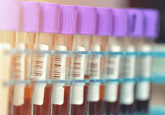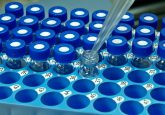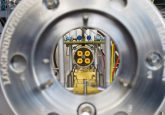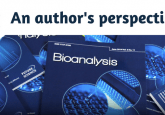BOSCA 2018: Dr Jack Henion
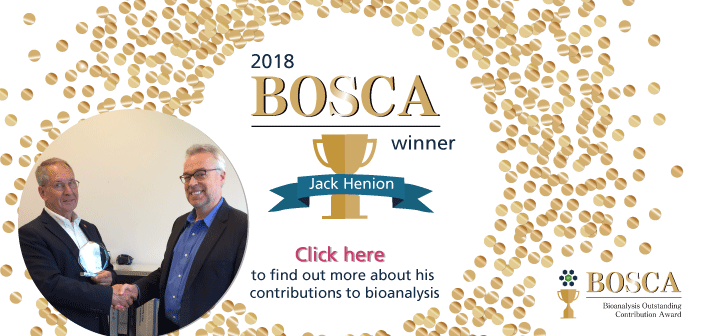
Dr Jack Henion (Advion; NY USA) is known among his peers and colleagues as the world leader in the field of MS and LC–MS, recently described as “the Christopher Columbus of LC–MS” by friend and colleague, Tom Covey (MDS/Sciex; MA, USA). Dr Henion has been credited with 13 patents and has published more than 230 peer-reviewed papers throughout a hugely successful career in bioanalysis. As the most recent Bioanalysis Outstanding Contributions Award winner, we asked Dr Henion about some of the most groundbreaking and pivotal moments in his career.
1. What was it that first attracted you to working with LC–MS?
HPLC was a relatively new analytical technique that promised to easily handle compounds which were not amenable to GC which was the ‘technique of the time’ then. I had just completed my doctoral thesis in mass spectrometry so I knew what a ‘real’ detector was. I felt that HPLC could really benefit from MS as a detector although it had not yet been done.
2. Eric Yang (GSK; London, UK) recently commented that “the bioanalysis community would not exist today without [the] groundbreaking work done in your lab decades ago.” What do you think was unique about your approach to LC–MS research that led to the groundbreaking discoveries and developments in research that you are celebrated for?
First I believed it should be possible when most said it was not. There is a famous cartoon by Dr. Patrick Arpino (Arpino, P. On-line liquid chromatography/mass spectrometry? An odd couple! Trends in Analytical Chemistry (TRAC) 1, 154–158 (1982)) that shows a bird hovering over a fish bowl with a fish looking up at the bird with love on its mind.
Of course, this was considered an impossible relationship! This metaphor defined the thinking of that time that there could be no way a technique operating in the liquid phase (HPLC) could ever join together with a technique that operated in the gas or vacuum phase. In addition, I love to have someone tell me ‘it cannot be done’. That motivates me to find a way to do it!
3. What have been the key challenges you have faced researching LC–MS? How have you been able to adapt and overcome these challenges in such a rapidly developing field?
LC–MS did not develop that rapidly. My first successful LC–MS experiment was in 1974 but LC–MS as an accepted analytical technique was not really available or embraced as a commercially available technique until the early nineties. There were several prior ‘generations’ or approaches to LC–MS but none took off until electrospray as well as APCI LC–MS became more routine. The early challenges dealt with how to introduce HPLC liquid effluent into the vacuum system of the mass spectrometer. It was not until the alternative approach of employing atmospheric pressure ionization (API) made the coupling of HPLC to MS much easier. Rather than trying to introduce one milliliter/min of aqueous mobile phase into the vacuum system we focused on introducing gas phase ions into the vacuum system rather than the liquid. This made the ‘coupling’ much easier. Initially, electrospray operated only at very low liquid flow rates that were way below common HPLC flow rates at that time. Thus, early electrospray MS was all done by introducing the sample by ‘infusion’; not via HPLC introduction. Our development at Cornell of ion spray (pneumatically-assisted electrospray) allowed significantly higher liquid flow rates which made coupling to HPLC possible. Of course, simultaneously MS/MS was developing and that technology really made LC–MS analytically powerful.
4. Looking to the future, how do you think LC–MS can be developed further? What techniques do you think are next to advance the field further?
Optimal LC–MS results are currently obtained from users who really know how to do good HPLC and who understand mass spectrometry and the vagaries of electrospray and APCI. Unfortunately, LC–MS is not yet as simple as driving a modern, high technology automobile where the driver only needs to know the rules of the road; e.g. the driver does not need to understand the engine, transmission or the ignition system. He or she just ‘pushes the starter button’ and drives off. We are not yet there with LC–MS, but we can be in the future. Future LC–MS systems need to be a ‘black box’ such that the operator can be anyone; not an expert. This trend is occurring as LC–MS is entering the clinical and forensic laboratories where thousands of samples are run regularly by non-specialists.
5. Are there any researchers/projects/technologies that you are watching at the moment, and who should we be keeping an eye on?
There are still many opportunities for improvements and advancements. Miniaturization is important and is occurring. Small, compact mass spectrometers are being developed. Advion has introduced a compact mass spectrometer amenable to LC–MS as well as facile ‘sniffing’ applications for rapid screening of breath and/or volatile sample head space analyses. 908 Devices has a hand-held mass spectrometer as well as a CE/MS interface which compliments LC–MS analyses. Integration of the HPLC with MS must be transparent and not involve an ‘interface’ which can often be the weak link in the system. The best interface is no interface! Simplicity of operation is the key to wider acceptance and should follow the intuitive ease-of-use nature common to iPhones and home entertainment systems. The cost of mass spectrometers must be lowered to make it more widely available such as in a police cars for roadside applications as well as being amenable, for example, to analysis by a certified cannabis grower to monitor the potency of the cannabis crop. There are many areas where LC–MS and mass spectrometry in general could be used but is not currently due to cost and complexity of the experiments. Finally, the drugs of the future will be large molecule biotherapeutics which will require catabolism characterization as well as their quantitative determination from biological samples. The sensitivity and selectivity of LC–MS techniques will certainly be needed to help bring these novel entities to market as safe and effective drugs. Since the pharmacological effectiveness of biotherapeutics will be the result of their native conformation in vivo, it will be important to demonstrate that we are analyzing the intact, native species to ensure we truly are measuring what was important in the dose/response process. Lastly, high resolution mass spectrometry has added tremendous analytical horsepower to LC–MS capabilities. However, in contrast to the points above, the orbitraps and QTOF’s of the future must be lower cost to allow wider use to the ‘masses’. The future of LC–MS will be exciting as novel and creative technology developments occur.

